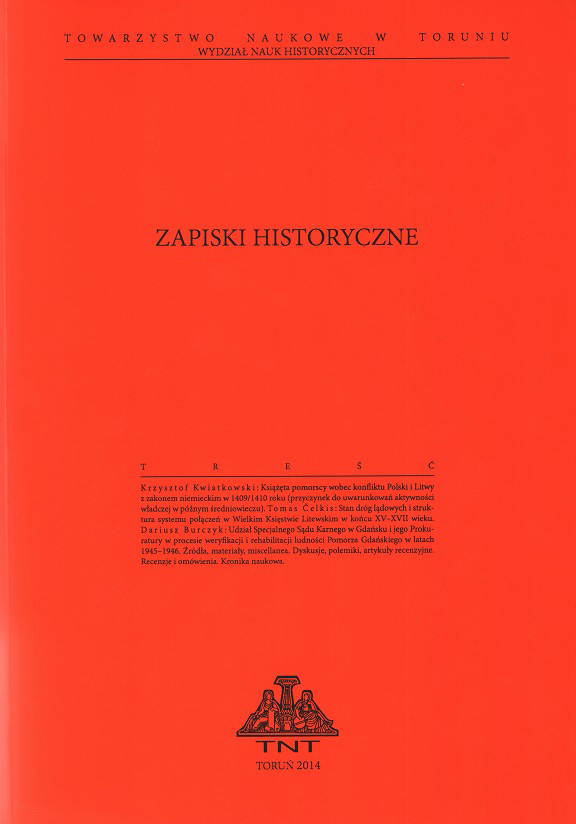Bitwa pod Kowalewem (5 X 1716) – geneza, przebieg, konsekwencje
Battle of Kowalewo (5 October 1716) – Origin, Course, Consequences
Author(s): Tomasz CiesielskiSubject(s): Military history, Political history, 18th Century
Published by: Towarzystwo Naukowe w Toruniu
Keywords: Polish-Lithuanian Commonwealth; the Tarnogród Confederation; Saxon army; Polish-Lithuanian army; battle of Kowalewo
Summary/Abstract: The article, which refers to the research on the Polish-Lithuanian Commonwealth’s military history in the 18th century and the crisis of Old Polish war art, presents the genesis, course and effects of the battle of Kowalewo of 5 October 1716. Epistolographic material, press and chronicle accounts along with plans of two battles constitute the source base. These primary sources were given a critical analysis, the acquired information being collated and verified in order to obtain a reasonably precise picture of the causes, course and consequences of the battle. The armed forces participating in the battle consisted of the military forces of the Tarnogród Confederation and the royal corps formed from Saxon and Polish regiments and banners, which made the battle fratricidal. About 9–10 thousand soldiers with 6 cannons fought on the side of the Confederation, whilst the royal army had 6,000–6,500 royal soldiers with 4–7 cannons. The confederates had numerical superiority, which was compensated by the advantage in artillery, firearms and better training of royal soldiers. It turned out that these factors were decisive, because the Confederate forces suffered a devastating defeat. After the battle, the group of Chrysostom Gniazdowski actually ceased to exist, and the second military unit commanded by Stefan Potocki withdrew to Mazovia. At least 1,500 or even over 2,000 confederates were killed or wounded in the battle. Another 610 were captured. The royal army also won six cannons and many military characters. The royal forces paid for their success with minor losses – probably only 132 killed and wounded soldiers. Although this battle should not have taken place due to the current ceasefire, its military and political effects were significant. As a result of the battle, the royal army regained full control over Kuyavia and Pomerania, securing the facilities of the troops protecting Warsaw. With the beginning of the Russian armed intervention, this led to the weakening of the confederates’ position in the ongoing peace negotiations, and, as a consequence, to the conclusion of a compromise agreement on 3 November 1716, which did not meet many of the demands of the Warsaw treaty.
Journal: Zapiski Historyczne
- Issue Year: 84/2019
- Issue No: 3
- Page Range: 31-56
- Page Count: 26
- Language: Polish

